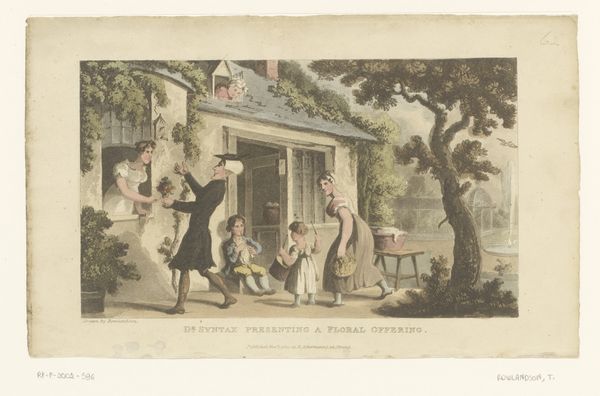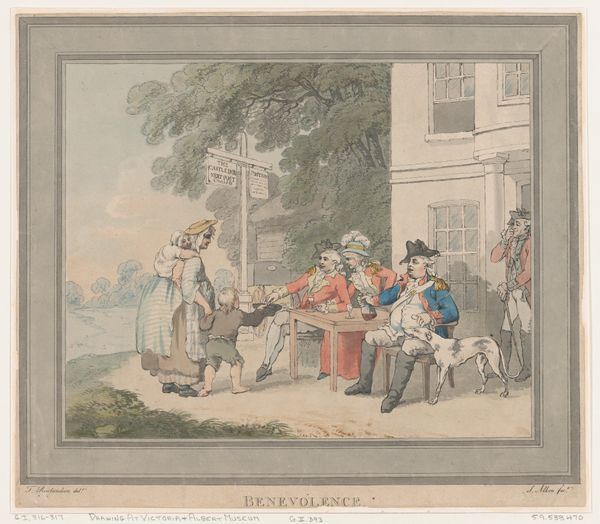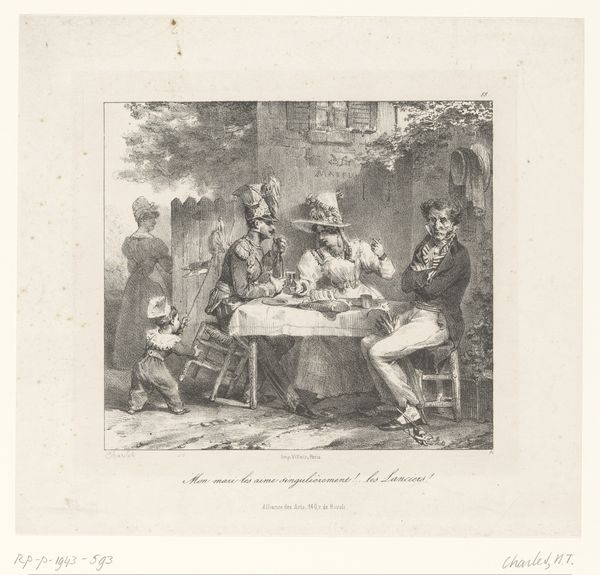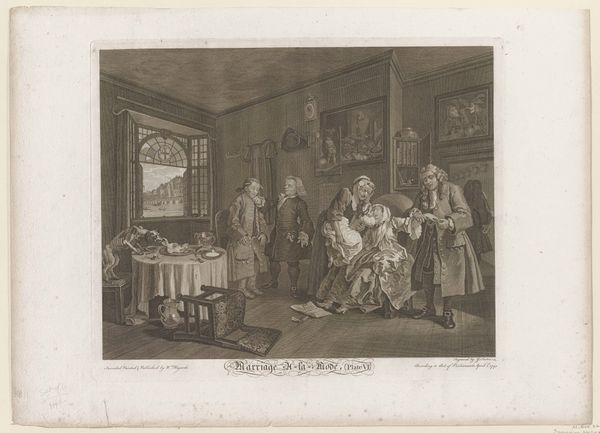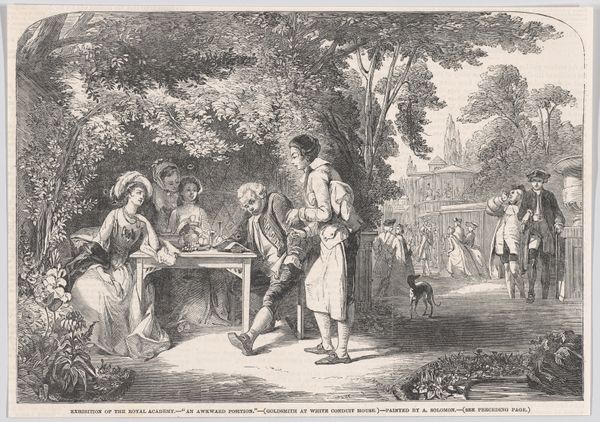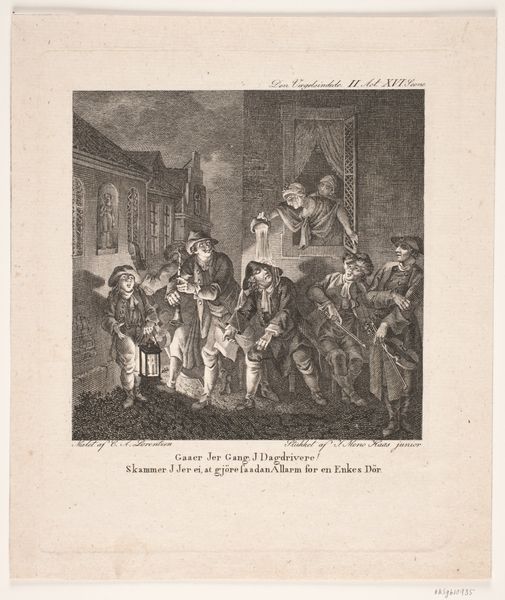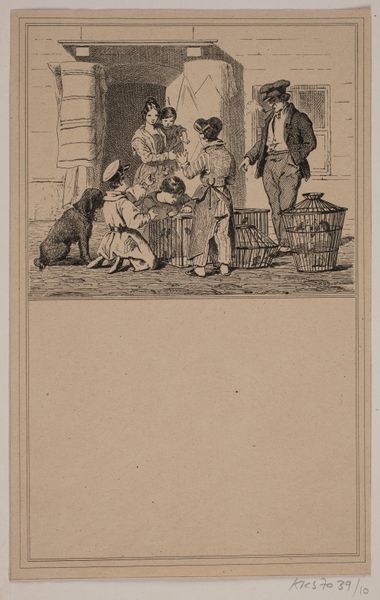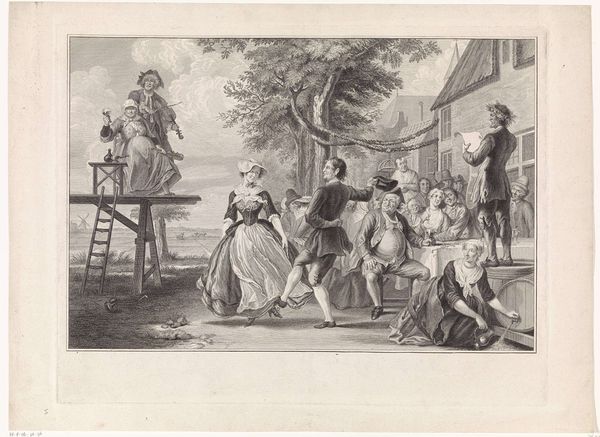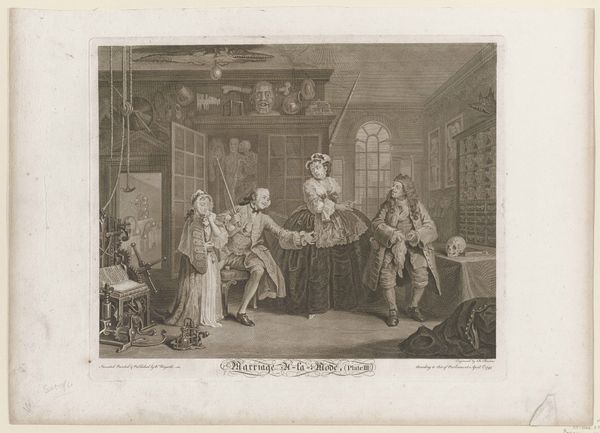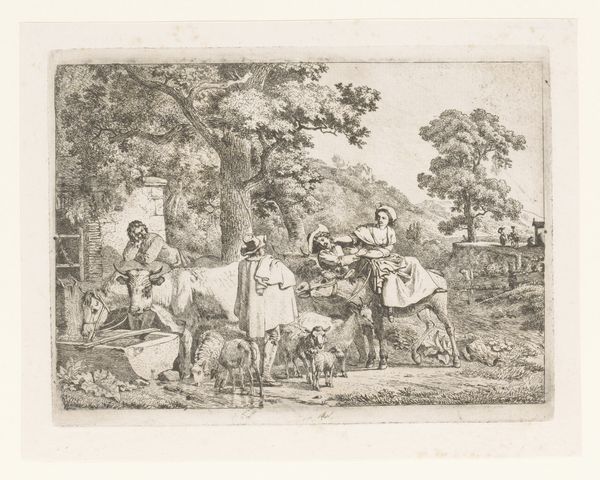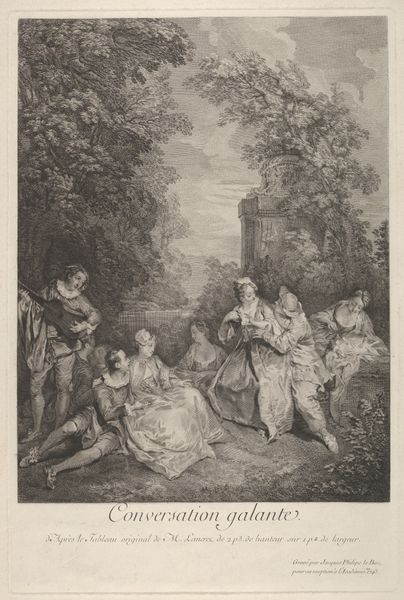
drawing, print, etching, engraving
#
portrait
#
drawing
#
narrative-art
# print
#
etching
#
figuration
#
historical photography
#
romanticism
#
genre-painting
#
history-painting
#
engraving
Dimensions: Sheet: 12 5/16 × 14 7/8 in. (31.3 × 37.8 cm)
Copyright: Public Domain
Curator: The work before us, "Benevolence," created in 1792 by Samuel Alken, presents a fascinating glimpse into late 18th-century society. It’s currently held at the Metropolitan Museum of Art. The print combines etching and engraving techniques. What’s your initial reaction to it? Editor: It strikes me as surprisingly theatrical. The figures are arranged almost like players on a stage, bathed in an even light that flattens depth and highlights gesture. It's a compelling tableau. Curator: Alken’s work reflects the social concerns of his time. This is no mere genre scene; consider how "benevolence" as a concept was debated then. It suggests more than charity. It highlights the unequal distribution of wealth, perhaps. Notice the sharp contrast between the well-to-do gentlemen outside the inn and the mother begging with her child. Editor: Agreed. The composition drives home that disparity. The strong verticals of the building and the signpost anchor the wealthy, almost walling them off from the mother and child who are placed at the very edge of the scene, threatening to fall out of the frame. Note the greyhound, a clear signifier of leisure and aristocracy, a visual barrier between the classes. Curator: Precisely! The very act of creating and circulating prints like this opened up new channels for social critique. Etchings and engravings democratized access to art and ideas, challenging the established hierarchies of art production and consumption. Alken was not only creating an image but participating in a wider debate about the responsibilities of the wealthy and the conditions of the poor. Editor: The technical skill is worth acknowledging. Alken masterfully uses line and tone to create depth and atmosphere, drawing the eye to certain details while subtly obscuring others. See how the soft rendering of the woman contrasts the harder outlines of the gentlemen and architecture, as if he wished to make her blend into her miserable situation, and them to pop out more from the background. Curator: Seeing this artwork through the lens of its production, its materials, and its role in social discourse adds a layer of depth. Editor: Indeed. Analyzing the visual language reveals a subtle commentary, amplifying the themes of compassion and inequity.
Comments
No comments
Be the first to comment and join the conversation on the ultimate creative platform.
